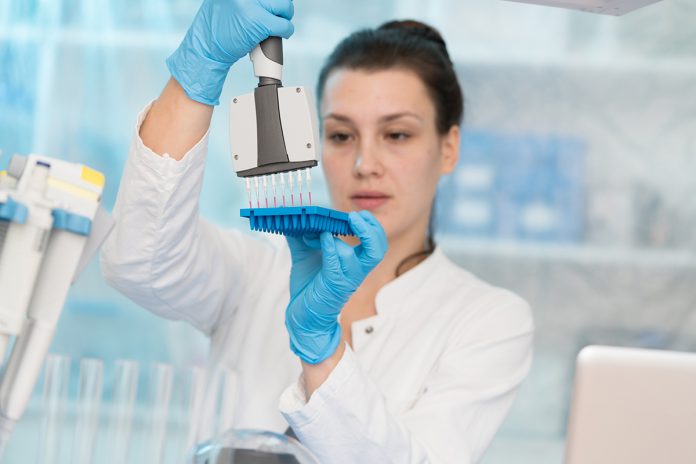The vast majority of genetic diseases remain beyond possibilities of treatment, with research continuing to be able to offer therapies to the affected patients
Treating genetic diseases is a challenge. A restricted number of these diseases can be treated through specific diet, medics, chaperone molecules or enzyme replacement therapies, while some rare recent advances brought gene therapy to the panel of treatments.
Treatable and so far untreatable genetic diseases
Creatine deficiency syndromes (CDS) are perfect examples of this difference between treatable and so far untreatable genetic diseases. CDS are caused by mutations in the genes coding for arginine:glycine amidinotransferase (AGAT) and guanidino-acetate methyltransferase (GAMT) (creatine synthetic pathway), as well as for the creatine transporter (SLC6A8).
These three diseases show a lack or very strong decrease of creatine (Cr) in the brain, measured by proton magnetic resonance spectroscopy (1H-MRS), and develop severe neurological symptoms. CDS account for 1-2% of all mental retardations, Cr transporter deficiency (CTD) being the most frequent (1% of all mental retardations in boys, as the SLC6A8 gene is located on the X chromosome).
Since a very long time, Cr is known for its role in ATP regeneration and cell storage of high energy phosphates under its phosphorylated form phosphocreatine (PCr) (through the Cr / PCr / creatine kinase system). More recently, Cr was also recognized as one of the main osmolytically active molecules of the brain, and may also act as neuromodulator or even true neurotransmitter.
AGAT and GAMT deficiencies can be treated by Cr supplementation. In contrast, despite more than 20 years of research since its discovery, CTD (SLC6A8 deficiency) is so far remaining refractory to any efficient treatment.
Cr supplementation was tried without any success to replenish brain Cr. The reason for this is that SLC6A8 is the sole way for Cr to enter the brain from periphery at blood-brain barrier (BBB). Cr precursors, arginine and glycine, as well as Cr derivatives being transported independently from SLC6A8 (but keeping Cr capacity to regenerate ATP) have also been tried but without any success either.
CTD is the archetype of a genetic disease extremely challenging to treat. CTD essentially affects the brain, and the only way to treat it signifies being able to restore sufficient levels of Cr (or Cr derivatives playing the same roles as Cr) within the brain tissue. The difficulty resides in the way a molecule can enter the brain from periphery.
To reach neurons or oligodendrocytes (the cells making myelin sheath in the white matter), a molecule transported from the blood has 1st) to cross microcapillary endothelial cells at BBB (one uptake and one efflux mechanisms), 2nd) to cross astrocytes surrounding BBB (another uptake and another efflux mechanisms), to finally reach the target cell (neuron or oligodendrocyte) through a third uptake mechanism, having thus in total five membranes to cross.
AAV-transduced gene therapy
Whatever these difficulties, hopes for treating SLC6A8 deficiency are arising nowadays in particular through new gene therapy technologies. Recently, the use of adeno-associated viruses (AAV) as attenuated viral vectors to treat genetic diseases by gene therapy has gained considerable attention, with successes already obtained for genetic diseases affecting both peripheral tissues and nervous system. As the brain remains challenging to treat, we and others are developing optimized AAV vectors able to efficiently transduce the brain tissue, with the aim of re-establishing the expression of a functional Cr transporter within the brain of CTD patients.
We test different delivery routes of our AAV vectors to CNS, through intravenous (to reach brain through BBB) or intrathecal (direct intracerebral delivery) injections. We are in the first pre-clinical phase of this development, using a new in vivo rat model of CTD, the Slc6a8Y389C/y knock-in rat, to demonstrate the proof of concept of our AAV strategy to treat CTD. We have already demonstrated that our AAV vectors efficiently transduce the desired brain cells after intravenous and intrathecal injections. We have also performed our first injections of AAV vectors transducing the functional SLC6A8, with the hope to demonstrate in the following months that we can correct CTD.
Our first results are promising as we could demonstrate partial prevention of CTD phenotype in the Slc6a8Y389C/y knock-in rat. However an important amount of work is still ahead to optimize our AAV treatment protocol. In particular, the optimal AAV doses have to be determined for each delivery route. The long term expression of the AAV-transduced gene has also to be evaluated.
The validation of our approach by AAV-transduced gene therapy consists in the analysis of the expected correction of the CTD phenotype. 1H-MRS is performed in central nervous system to demonstrate the expected replenishment of brain Cr.
The weight gain of AAV-SLC6A8-transduced animals is also followed up: indeed, Slc6a8Y389C/y knock-in male rats, as male human patients, show a progressive attenuation of their weight gain in comparison of wild type littermates. Different behavioural tests are being performed, for which Slc6a8Y389C/y knock-in rats demonstrated altered results in comparison to wild type animals. A correction of the performances of these tests is expected.
While AAV viruses are known to elicit no or very low immunogenicity, this aspect of AAV gene therapy is also being carefully analysed within our Slc6a8Y389C/y knock-in rat model transduced by AAV-SLC6A8.
Apart of potential elicitation of anti-AAV antibodies in transduced animals, other potentially AAV-driven toxic mechanisms are carefully evaluated, both in peripheral tissues and in central nervous system (cell death, alterations of cell morphology, tumorigenicity). We are also analyzing another aspect of potential toxicity of our treatment: the eventual AAV-transduced (over) expression of SLC6A8 at ectopic localization.
Promising results for the future of gene therapy and genetic diseases
In conclusion, while still ahead of a validated pre-clinical protocol to treat CTD by AAV-driven gene therapy, our promising results, and the panel of tests described above aiming to refine treatment efficiency and safety, make us confident to develop a long-awaited way to treat this so far untreatable metabolic disease affecting brain development.

This work is licensed under Creative Commons Attribution-NonCommercial-NoDerivatives 4.0 International.








